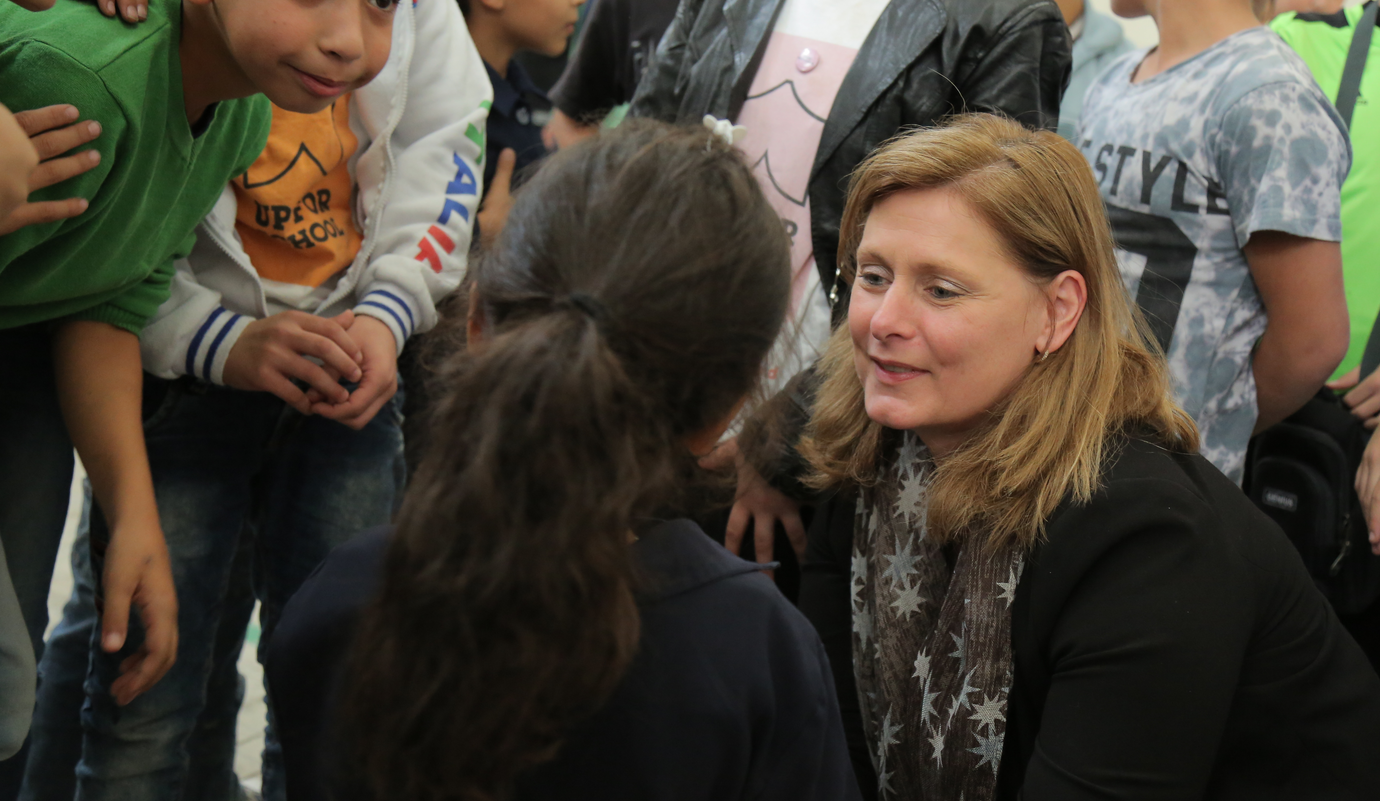
Safe Schools: Fighting back against gang violence to make children safer in Central America
Barriers to education, Right to education, Safe schools
To mark Theirworld's Safe Schools report, we look at the threats to children and new initiatives that are helping to make more peaceful environments.
Gang violence, extortion and guns in and around schools in Central America are issues severely impacting education for thousands of girls and boys.
But new initiatives are fighting back to make schools safer for children in countries where gang culture is rife, such as El Salvador, Honduras and Guatemala.
Such is the scale of violence in Honduras, for example, that 90% of teachers say their school has been targeted by local gangs.
“I felt scared inside and outside school. One day as we were leaving school, the police were engaged in a shootout with a local gang,” 13-year-old Katherine, from Choloma in northern Honduras, told UNICEF.
Violence against students there is mostly physical and has included cases of extortion, threats and robberies. There is also psychological violence aimed at teachers via threats, personal assaults and damage to their vehicles.
Gang violence is only one kind of threat to education examined in a new report from Theirworld called Safe Schools: The Hidden Crisis. It reveals the enormous scale of attacks on schools and other dangers to education suffered by millions of children around the world.
On the gangs threat in Latin America, the report says: “Pervasive violence means even walking a short distance from home to school could mean getting caught in crossfire between police and armed groups.”

In Guatemala, almost 60% of students are afraid of going to school. At least 23% of students – and almost 30% of teachers – have been victims of violence or know someone who has been harassed by gangs, known as “maras”, when entering or leaving school.
The situation is similar in El Salvador – where almost one in four students (23%) aged 13 to 15 reported in 2015 they had not attended school for one or more days during the previous month due to security problems.
The figures were provided to Their News by UNICEF Latin America and the Caribbean, which has been working to combat violence in the region and make schools safer.
Gang violence is endemic in Central America. A gang called MS-13 has an estimated 70,000 members in Honduras, El Salvador and Guatemala, according to US Southern Command, which is responsible for US military activities in South and Central America.
MS-13’s main rival is 18th Street – also known as Barrio 18 or M18 – which has fewer members in Central America. Many gang members are covered in tattoos and they are feared in their communities.
Katherine from Honduras talked to UNICEF talked about the traumatic effect of violence.
She said: “There were accidents – a child who was enrolled in a kindergarten nearby was the victim of a stray bullet.”
Violence in the educational environment manifests itself in many forms, starting with the presence of criminal groups, gang members and weapons in the surroundings of the schools. Jose Bergua, Regional Advisor for Child Protection UNICEF Latin America and the Caribbean
Alondra, another 13-year-old girl from Choloma, said: “Once when I was going to the school, I saw a dead body on my doorstep”.
Katherine and Alondra’s school, the Centro Educativo Presentación Centeno, is in a city notorious for violence.
In 2016, Choloma registered one of the highest homicide rates in the country with 92.7 people killed per 100,000 inhabitants.
Most of these violent deaths in the city are caused by rival gangs and adolescents as young as 13 are recruited by the maras.
However, school pupils are fighting back and – with support from UNICEF and the Ministry of Education – they created a Peace and Coexistence Committee to promote an environment where violence is not tolerated.
Katherine is President of the Committee. She said: “Part of our job in the committee of peace and coexistence is to check for any behaviour that may cause fights. There’s also a watch team composed of students to check for fights in the school.
“We have found that in recent years there are very few arguments between children. What do we do? First, we give chats in the different classrooms. However, most importantly, we try to lead by example.”
The creation of the committee is part of a larger management model for the prevention of violence in schools that UNICEF, together with the Ministry of Education in Honduras and an alliance of NGOs, has developed.
The UN children’s agency has been supporting other Central American nations to build safe schools. This often involves dialogue among families, children and the authorities, as well as the private sector and communities – both for immediate action and for a long-term response.
Jose Bergua, Regional Advisor for Child Protection UNICEF Latin America and the Caribbean, said: “Violence in the educational environment manifests itself in many forms, starting with the presence of criminal groups, gang members and weapons in the surroundings of the schools.
“On certain occasions, these groups or weapons infiltrate into the institutions, creating a sense of ‘unsafety’ that increases absenteeism and, in many cases, leads to permanent school dropouts.
“In addition, the extortion of teachers and students by criminal groups and gang members, theft and the destruction of school facilities not only obstructs access to schools but also generates fear and other negative psychological consequences, diminishing the quality of education and learning.”
Bergua said a number of initiatives were improving safety. He added: “In Guatemala, the Ministry of Education in coordination with UNICEF and the Safe Cities initiative developed the VozApp mobile application for the prevention of early violence in schools and communities.
In Honduras, more than 21,000 children and teenagers have been protected from school violence in 70 schools, located in municipalities with some of the highest crime rates in the country.
Bergua said this has been achieved by identifying risk factors and working with schools, parents and the community to implement specific campaigns to eradicate violence.
He added: “The strategy seeks to ensure that all children, teenagers, families and communities have access to quality education in protective and stimulating environments, strengthening the capacity building of the education system and the educational community to build a culture of peace and harmony.”
More news

Theirworld’s mission to give children in crises a safe place to learn
